|
Click pictures for a larger version.
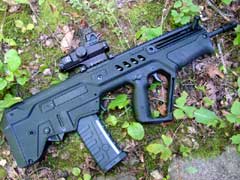
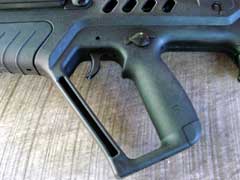
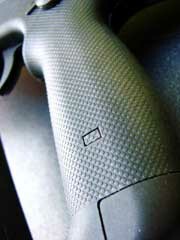
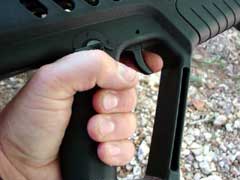
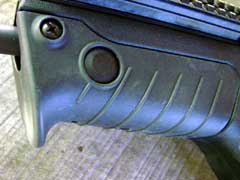
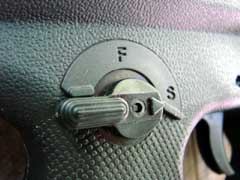
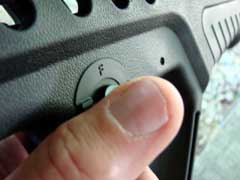
Safety/selector can be reversed for use by either
right-handed or left-handed shooters.
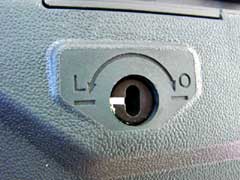
Barrel lock.
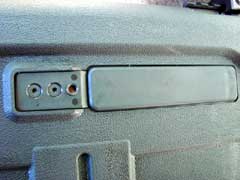
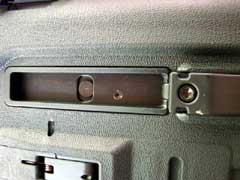
Ejection port cover allows easy conversion for
right-handed or left-handed shooters.

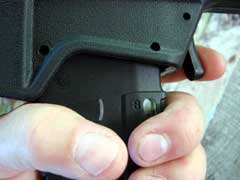
Ambidextrous magazine release.
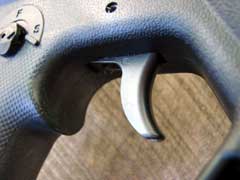
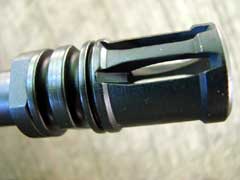
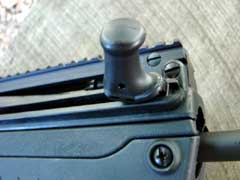
Trigger (top), flash suppressor (center), charging
handle (bottom).
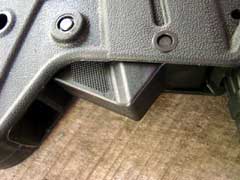
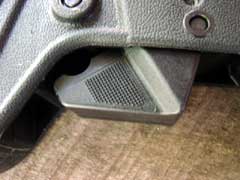
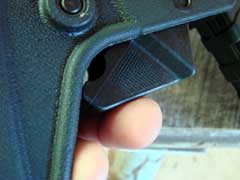
Ambidextrous bolt release.
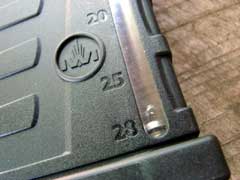
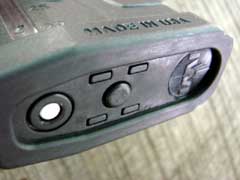
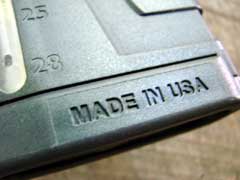
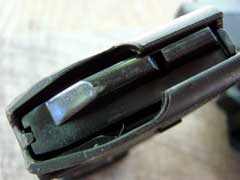
Tavor uses standard M-4/M-16/AR-15 style magazines.
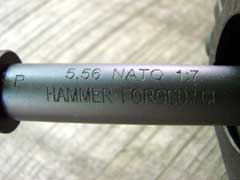
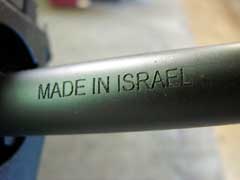


|
|
Several years ago, the Israeli Defense Forces
(IDF) set out to adopt a replacement for their Galil ( I love
the Galil ) and M-16 rifles. The Israelis found that a more
compact, handier weapon would be better-suited for the
close-quarters fighting that was necessary in modern warfare,
yet they wanted more power and range than was offered by
then-current submachine guns. After much research and
development, what they adopted was the select-fire Tavor, which
is pretty close in design and function to the semi-automatic
Tavor SAR shown here.
The Tavor uses a bullpup configuration, which
places the magazine and action to the rear of the weapon,
resulting in a short overall length, compared to a standard
rifle configuration when both have equal-length barrels. The
Tavor shown here has a chrome-lined sixteen and one-half inch
barrel, yet is shorter overall than most short-barreled rifle (SBR)
configured AR-15 style weapons. Most sources, including the IWI
website, list the overall length of the 16 ½ inch carbine as
twenty-six and one-half (26.5) inches, but mine measures
twenty-seven and one-eighth (27.125) inches overall, from the
butt plate to the end of the flash suppressor.
The Tavor uses a thoroughly modern modular
design which allows the weapon to be quickly converted from
right-handed to left-handed use, and also to change calibers by
installing a conversion kit for either the 9x19mm or 5.45x39
cartridges, with the promise of a 300
AAC Blackout conversion coming later.
The IWI Tavor uses the cheap and plentiful AR-15 style
magazines, in any of their many configurations and capacities.
The magazine release is easy to reach and of ambidextrous
design, as is the bolt release, which is used to close the
chamber after a loaded magazine is inserted into the magazine
well. The charging handle is non-reciprocating, and is
switchable to either side of the weapon. Its forward placement
makes it very easy to reach and to operate.
The Tavor shown here wears a sixteen and
one-half inch hammer-forged barrel with a one-in-seven-inch
rifling twist, but an eighteen inch version is also available.
The Tavor is available with a Mepro-21 Reflex optical
sight, or with a flattop receiver, as shown here. Integral with
the flattop’s Picatinny rail are a set of steel folding
sights, of which the front is adjustable for elevation
correction. Quick-attach
sling loops are provided, as are a detailed instruction manual
and an excellent cleaning kit.
The Tavor is very simple and quick to
disassemble for cleaning by pushing out one pin to the left,
dropping the butt plate, and allowing the bolt carrier and
piston assembly to slide out to expose the breech for cleaning.
The short overall length makes the Tavor very handy for
close-quarters work, such as in a vehicle or inside a dwelling.
The Tavor weighs in at 7.9 pounds empty, and the weight bias is
towards the rear of the weapon, making one-handed use easy, if
the other hand is needed to manipulate a door handle or to hold
a flashlight. The trigger pull on the Tavor requires a long,
deliberate pull, which is not helpful for shooting tight groups
on paper from a benchrest, but the Tavor is not meant to be a
benchrest target weapon. Instead, this carbine is made for
fighting, and for that purpose, the trigger is acceptable. The
trigger pull on the test weapon weighed in right at seven and
three-quarters pounds resistance, and requires just over a
half-inch of travel to release.
I have read other reports of trigger pulls on these
weapons measuring between ten and twelve pounds resistance, but
I measured the pull on this test weapon after it had fired many
rounds, and it seems much better now than before the weapon had
seen a lot of use.
The ergonomics of the Tavor work very well
for me, and I find the carbine exceptionally comfortable to
shoot. The angle of the grip, and the size and texture of the
foregrip for the support hand feel near perfect. The safety
selector is easy to operate and easy to reach. Bullpup carbines
are not usually friendly to left-handed shooters, but the Tavor
will accommodate either right-handed or left-handed shooters
equally well, depending upon which version is used.
The recoil impulse is straight back, and the weapon tends
to have no muzzle rise at all, being extremely easy to control
in rapid fire. The Tavor’s stock is made of durable polymer,
with the remainder of the weapon made primarily of aluminum and
steel. The butt plate is a soft synthetic rubber, that stays in
place on the shoulder very well.
I carried this Tavor SAR on my annual trek to
the Shootists Holiday at the NRA
Whittington Center near Raton, New Mexico to give it a
workout in a dusty environment and to do some long-range
shooting. I mounted my Leupold HAMR
optical scope atop the Tavor’s Picatinny rail. The HAMR is
an excellent optic for rugged use, and it also has Leupold’s
DeltaPoint electronic dot sight mounted on top, for close-range
use. I fired the Tavor from a bench on paper at one hundred
yards to get the HAMR sighted in, then proceeded to fire at
steel targets and small rocks at distances from one hundred out
to six hundred yards. The excellent Leupold optic and the
rifle’s ergonomics enabled reliable hits at most and distance
out to 400 yards, but on small targets at farther distances, it
required a lot of concentration squeezing the trigger to get
more hits than misses. The rifle has the accuracy potential, but
I prefer a crisp trigger to do precise work at long range.
However, the Tavor performed perfectly, feeding and firing every
type of ammunition fed to it. I fired a variety of ammunition,
including IMI 55 grain ball, US Military Lake City green-tip,
and Buffalo Bore 69 grain Sniper 223 Remington ammunition. There
were no failures of any kind with any of the ammunition tested.
Getting the Tavor carbine back to Tennessee,
I tested for accuracy at one hundred yards on paper after
mounting a Leupold Mark 4 8.5 to 25 power scope, set to its
highest magnification. The Tavor proved very capable of
sub-minute of angle accuracy with some ammunition, with most
ammo tested shooting in the two minute range. Again, the nature
of the trigger pull required a lot of concentration on the part
of the shooter to achieve good tight groups from the bench, but
this exercise really has nothing to do with the purpose for
which this rifle is built, as the Tavor is primarily a fighting
tool, and has proven to work very well in the harsh conditions
in which the Israeli military puts the weapon to use.
The IWI Tavor is a compact, reliable weapon
that is as close as most of us will ever get to firing the same
weapon as used by the IDF. The Tavor is assembled in the USA,
from domestic and Israeli parts.
As of the date of this review, the suggested retail price
of the Tavor is $1999 US.
Check out the IWI Tavor online at www.iwi.us.
For the location of an IWI dealer near you,
click on the DEALER FINDER at www.lipseys.com.
To order the IWI Tavor online, go to www.galleryofguns.com.
To
order quality ammunition online, go to www.midsouthshooters.com,
www.luckygunner.com,
www.doubletapammo.com,
and www.buffalobore.com.
Jeff Quinn
  
Got something to say about this article?
Want to agree (or disagree) with it? Click the following link to
go to the GUNBlast Feedback Page.
|
|
Click pictures for a larger version.
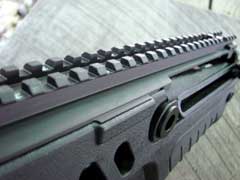
Full-length Picatinny rail.
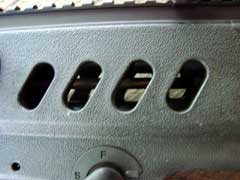
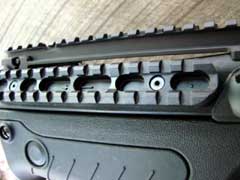
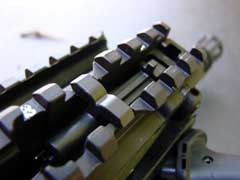
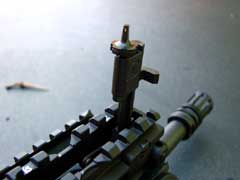
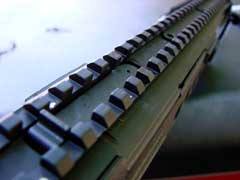
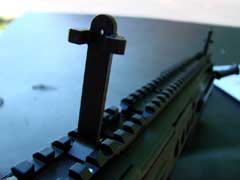
Integral folding sights.
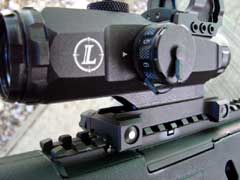
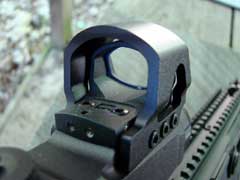
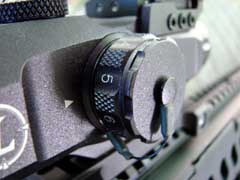
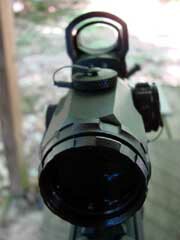
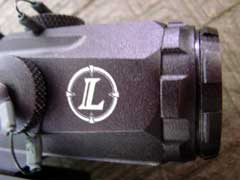
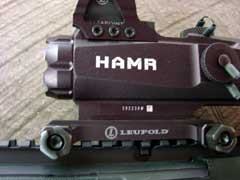
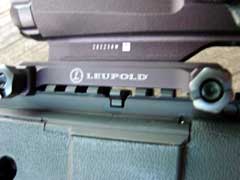
Leupold HAMR scope with DeltaPoint mounted atop.
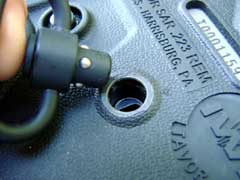
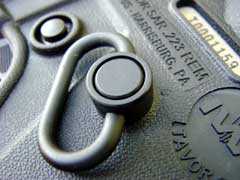
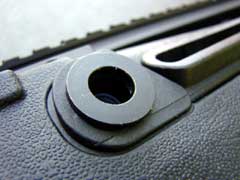
Quick-attach sling loops.
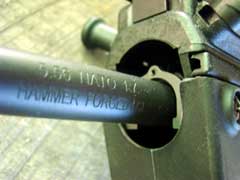

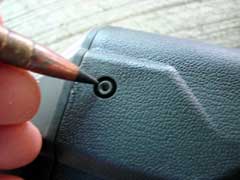
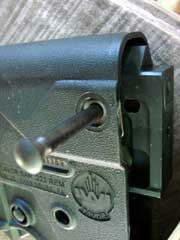
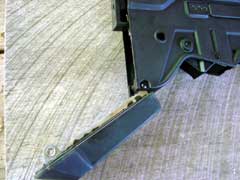
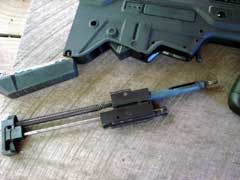
Disassembly for cleaning is quick and easy.
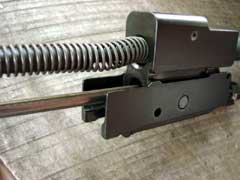
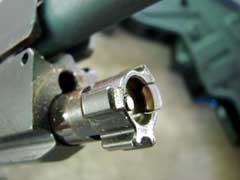
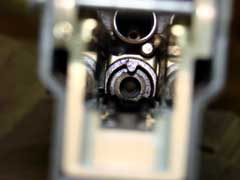
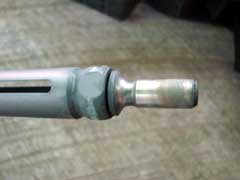
Gas piston.
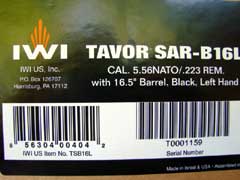
|
![]()